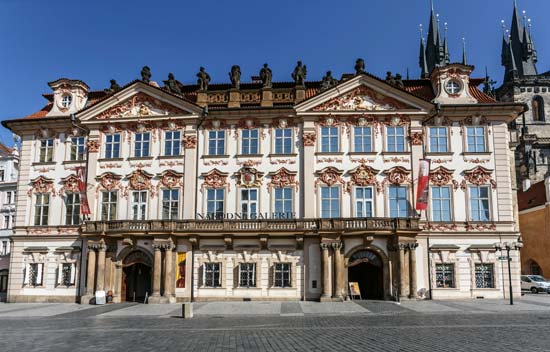Rococo
Rococo, also known as ‘late Baroque’, was an extreme, decorative development of Baroque architecture that emerged in the 18th century as a reaction against grandeur and symmetry. It was a more fluid and florid elaborate style, comprising ornate, asymmetric designs and pastel shades.
It originated in Paris, in response to the ponderous, strict Baroque architecture that had risen to prominence with buildings such as the Palace of Versailles and the official art of Louis XIV’s reign. It was soon adopted as a style across France and other countries such as Germany and Austria. However, by the end of the 18th century, Rococo had largely been replaced by the Neoclassical style.
Although there are many similarities between Rococo and Baroque architecture, the design approach tends to be more playful, light and with an exuberant use of curves. One of the principal differences between the styles is with regard to symmetry; Rococo emphasising the asymmetry of forms.
Rococo is also a more secular adaptation of Baroque, which is often more serious, with the intention of instilling awe in the faithful. Walls, ceilings and mouldings are decorated with numerous interlacings of curves and counter-curves based on the shapes of ‘C’ and ‘S’, along with shell forms and other naturalistic shapes.
The colours of Rococo are predominantly pale, such as light pastel, ivory white and gold, with frequent use of mirrors to enhance the sense of open space. French furniture from the period often displays curving forms, naturalistic shell and floral ornament, and playful use of gilt-bronze and porcelain decoration.
Some of the most notable buildings of the Rococo style are:
- Salon de Monsieur le Prince, Chantilly.
- Salons of the Hotel de Soubise, Paris.
- Amalienburg, Munich.
- Charlottenburg Palace, Berlin.
- Czapski Palace, Warsaw.
[edit] Related articles on Designing Buildings Wiki
Featured articles and news
The UK's Modern Industrial Strategy: A 10 year plan
Previous consultation criticism, current key elements and general support with some persisting reservations.
Building Safety Regulator reforms
New roles, new staff and a new fast track service pave the way for a single construction regulator.
Architectural Technologist CPDs and Communications
CIAT CPD… and how you can do it!
Cooling centres and cool spaces
Managing extreme heat in cities by directing the public to places for heat stress relief and water sources.
Winter gardens: A brief history and warm variations
Extending the season with glass in different forms and terms.
Restoring Great Yarmouth's Winter Gardens
Transforming one of the least sustainable constructions imaginable.
Construction Skills Mission Board launch sector drive
Newly formed government and industry collaboration set strategy for recruiting an additional 100,000 construction workers a year.
New Architects Code comes into effect in September 2025
ARB Architects Code of Conduct and Practice available with ongoing consultation regarding guidance.
Welsh Skills Body (Medr) launches ambitious plan
The new skills body brings together funding and regulation of tertiary education and research for the devolved nation.
Paul Gandy FCIOB announced as next CIOB President
Former Tilbury Douglas CEO takes helm.
UK Infrastructure: A 10 Year Strategy. In brief with reactions
With the National Infrastructure and Service Transformation Authority (NISTA).
Ebenezer Howard: inventor of the garden city. Book review.
The Grenfell Tower fire, eight years on
A time to pause and reflect as Dubai tower block fire reported just before anniversary.
Airtightness Topic Guide BSRIA TG 27/2025
Explaining the basics of airtightness, what it is, why it's important, when it's required and how it's carried out.
Construction contract awards hit lowest point of 2025
Plummeting for second consecutive month, intensifying concerns for housing and infrastructure goals.
Understanding Mental Health in the Built Environment 2025
Examining the state of mental health in construction, shedding light on levels of stress, anxiety and depression.






















